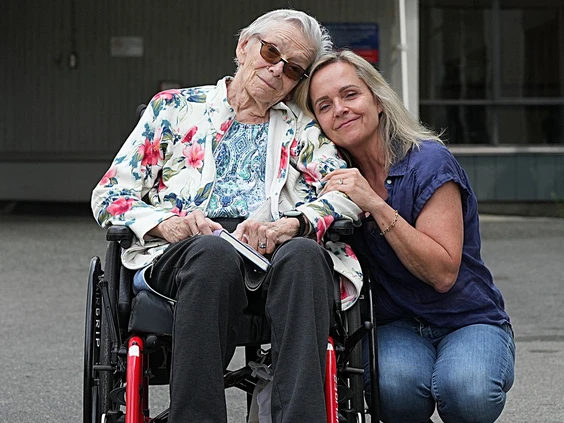Barbara Donaldson, an 84-year-old woman from Victoria, British Columbia, has already spent months waiting for a space in a long-term care facility and could face as much as two more years before one becomes available. She has advanced Parkinson’s disease and needs specialized support that is only available in a long-term care setting. For the past six months, she has been in a hospital bed while waiting for placement. Her daughter, Laura Kyle, has been pushing for faster action since last summer, but says she has faced constant delays despite long-standing warnings from experts about the needs of an aging population.
Kyle says her mother’s situation shows how the shortage of spaces affects real families. She believes the government has known for years that the baby boomer generation would soon require more care but failed to prepare. Her frustration reflects a broader crisis identified by B.C. seniors advocate Dan Levitt, who reports that the wait list for long-term care has risen from 2,381 people in 2016 to 7,212 in 2025, a 200 percent increase. Average wait times have also doubled, from 146 days to 290 days. This backlog is leaving hospital beds filled with seniors who no longer need acute care but cannot live on their own.
Nursing expert Jennifer Baumbusch of the University of British Columbia says this problem has been predicted for decades. She points to a lack of new facilities and insufficient funding for community-based care. If construction and investment had been made 20 years ago, she says, the crisis could have been avoided. Instead, hospital resources are stretched, and seniors are left waiting far too long for appropriate care.
Donaldson previously lived in an independent senior residence operated by Amica Senior Lifestyles. While Amica also offers long-term care, the cost is about $18,000 per month, far beyond what most families can pay. Kyle was initially told that if her mother entered private care and later ran out of funds, she could qualify for priority placement in a subsidized facility. However, Island Health removed that option earlier this year.
In February, Donaldson had a medical emergency and spent six weeks in the hospital. Kyle sought home care options, and Island Health at first promised 24/7 support to keep her mother in her independent living suite. The offer was reduced over several weeks, first to three shifts a day, then two, and then withdrawn completely. By then, her mother had already stayed in the hospital a month longer than planned, and Kyle noticed her mental health beginning to decline. Extended hospital stays, she says, can cause confusion and hallucinations in seniors.
Other temporary options also fell through. A convalescent home was deemed unsuitable for someone with a degenerative condition, and another program, called STEPS, no longer existed. Eventually, Donaldson was moved to the transitional wing of Gorge Road Health Centre. While it is outside the main hospital, Kyle says it still feels institutional, and her mother only receives one day of structured activities per week, leading to further mental decline.
Kyle now worries about the future, both for her mother and for other seniors in similar situations. Levitt’s report notes that more than 12 percent of seniors in long-term care could remain at home if they had the right support services. Expanding home care, experts say, would free up beds and ease hospital overcrowding.
Neither the Ministry of Health nor Island Health has responded to questions about the growing waits or reduced home care services. Kyle says the process has been exhausting, and she fears what the situation will be like in the coming years as more people need care. For many families, long-term care wait times in British Columbia have become a test of endurance, with seniors caught in a system that cannot meet the demand.

